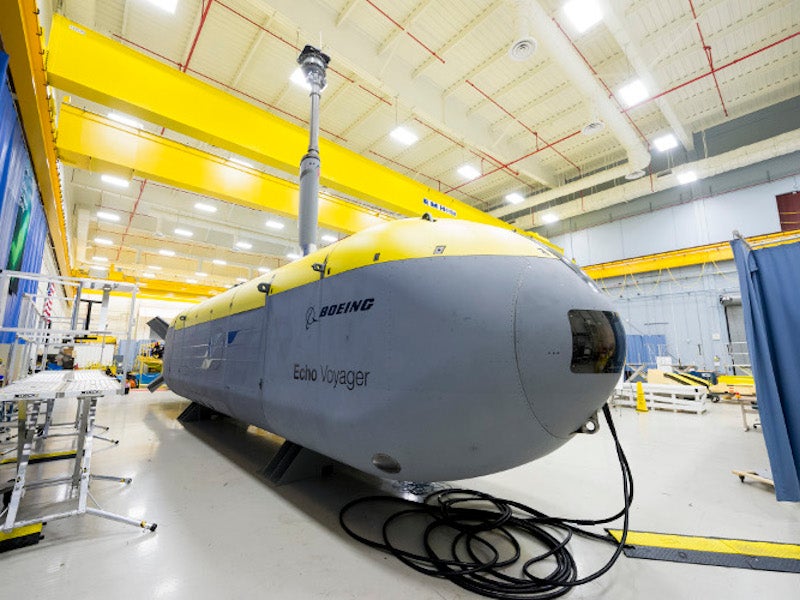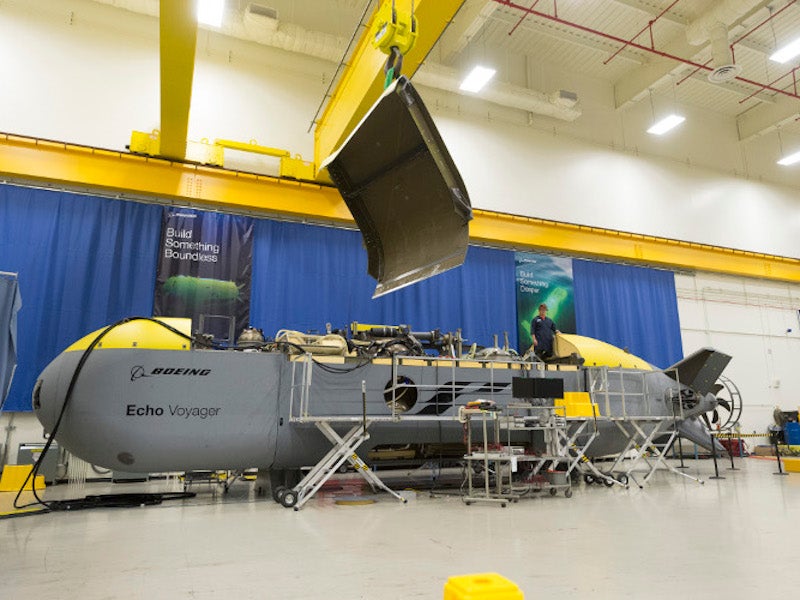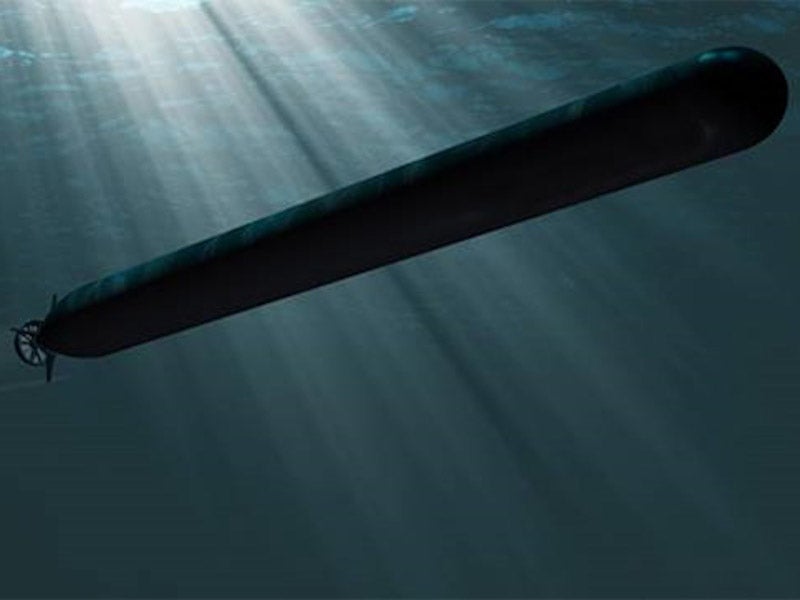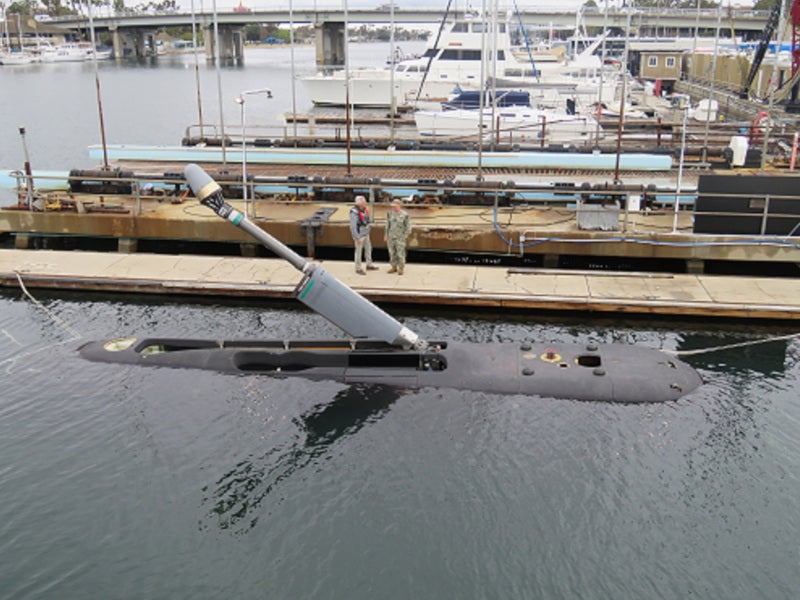Orca is an autonomous extra-large unmanned undersea vehicle (XLUUV) manufactured by Boeing to meet the growing demand for undersea operational awareness and payload delivery. The US Navy uses the XLUUV for potential capabilities such as mine countermeasures, anti-surface warfare (ASuW), anti-submarine warfare (ASW), electronic warfare (EW) and strike missions.
The long-range underwater vehicle is developed to perform critical missions with reliability. It is expected to provide the ability to launch, recover, operate and establish communications with the vehicle from a home base away from the area of operation without the need for navy personnel.
The underwater vehicles are being developed to address a Joint Emergent Operational Need (JEON).
Boeing handed over the Orca XLUUV test asset system designed as XLE0 to the US Navy after finishing acceptance tests in December 2023.
Risk-reduction testing on the XLUUV off the coast of Southern California commenced in March 2024.
The insights gained from testing XLE0 will help in the construction and delivery of Orca XLUUV 1 through 5 for the Navy in the future.
Orca XLUUV development details
The US Navy selected Boeing and Lockheed Martin for the first phase of the XLUUV programme with the companies securing design contracts in September 2017. The design contract awarded to Lockheed Martin was worth $43.17m while the one awarded to Boeing was approximately $42.27m.
The US Navy intends to procure a total of nine vehicles under the programme. Boeing won a $43m contract in the second phase of the competition to build, test and deliver four XLUUVs and related support elements in February 2019. A $46.7m contract modification was awarded to the company in March 2019 for the production of an additional prototype vehicle, bringing the total contract value to $274m.
Boeing partnered with Huntington Ingalls Industries (HII) to design and develop new unmanned undersea vehicles for the US Navy’s XLUUV programme in June 2017.
The Orca XLUUV was christened and underwent the first in-water test in April 2022. The first autonomous in-water testing began in July 2023.
The XLUUV underwent various phases of at-sea testing in partnership with the US Navy, demonstrating its unique capabilities through manoeuvres both above and below the surface.
Orca XLUUV design and features
Boeing’s winning design for the Orca programme is based on its Echo Voyager fully autonomous XLUUV, which was introduced in March 2016.
The company tested various configurations of Echo Voyager and improved the performance of the platform. The vehicle underwent the first sea trial in 2017, while the second test was conducted in 2019.
Echo Voyager has an overall length of 26m, including the length of added payload carriage. It is 2.6m-wide and weighs 50t in air.
The submersible can carry out operations for months since it is fitted with a hybrid rechargeable power system and modular payload bay. It can be launched and recovered without the requirement of support ships.
Orca features a modular design with an open architecture and potential for reconfiguration. It provides guidance and control, autonomy, navigation and manoeuvring capabilities. The XLUUV is integrated with interfaces to allow for future upgrades to accommodate the latest technology and meet evolving threats. It can travel to an area of operation, loiter there, communicate, deploy payloads and return to its home base.
An active buoyancy control system aboard mainly provides capabilities, including autonomous buoyancy control, seafloor mooring and forward and aft trim control.
Navigation and communications of Orca XLUUV
The vehicle’s navigation system includes Kalman filtered inertial navigation unit (INU), doppler velocity logs (DVLs), depth sensors and seafloor long baseline (LBL) transponders. Echo Voyager is also equipped with GPS to support its operations on or near the surface. Encrypted Inmarsat IV, Iridium, Wi-Fi and FreeWave-enabled communications are used for command, control and mission re-planning while the vehicle performs near-surface operations.
The submersible uses acoustic communications for command and control during submerged operations.
Orca is expected to be equipped with forward-looking sonar (FLS) and autonomous obstacle avoidance algorithms to avoid obstacles. The FLS and the DVL facilitate terrain-following capability at the seabed.
Payloads carried on Orca XLUUV
The modular payload bay can hold 8t of dry weight and it is powered by an 18kW battery. It also accommodates external payloads. The payload bay has interfaces to support requirements for existing and future payloads. The vehicle can carry sonar payloads, including a Raytheon PROSAS PS60-6000 synthetic aperture sonar for improved ocean floor mapping.
Performance of the Orca XLUUV
The Orca XLUUV cruises at a minimum speed of 2.5 knots and a maximum speed of eight knots. The optimal speed of the vehicle is in the range of 2.5 knots to three knots. It offers an operational range of nearly 6,500nm.
The vehicle surfaces onto the water with its mast raised and activates its diesel-powered generators when the onboard lithium-ion batteries are almost discharged.
Contractors involved
Swift Engineering, a product development company, supported Boeing in the development of the Orca XLUUV.







